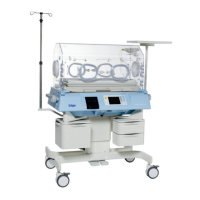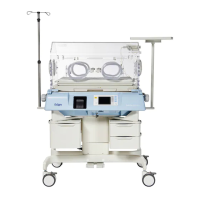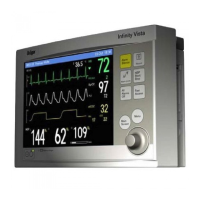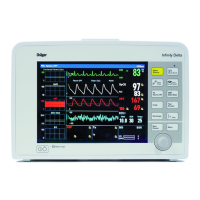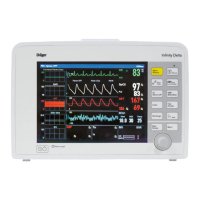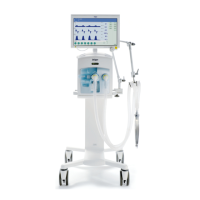Theory of Operation
Chapter 3: Theory of Operation
Page 3 - 18 Isolette® Infant Incubator (Model C2000) Service Manual
Sensor Position Detection
Hall effect sensors sense the magnets in the slide mechanism. The
sensors, U9 and U2, determine the calibration position. The sensors,
U16 and U22, determine the hood’s position during normal operation.
The output is normally high. These devices provide a low output if a
significant south pole magnetic field is applied to their surface.
Remote Light Alarm Indicator
DS1 provides an alarm indication with a high field of view. A positive
signal, RMLITE, at the gate of transistor Q3 illuminates DS1.
Scale Interface
The connector J3 provides the interface and power for the scale
module. The scale module supports serial data communication. The
signal SCCLK is used for scale communication only and is normally
high when the scale is disconnected. The signal CDATA is bi-directional
and is normally in the low state when the scale is not connected.
Fan Control/Feedback Circuit
To drive the DC fan on the sensor board, the signal FANON pulses Q1
on its gate at a 50% duty cycle at approximately 48 Hz to maintain
proper speed and to increase fan life. Every 4 seconds, the
microcontroller asserts FANON for 42 milliseconds, and the fan pulse
detection begins.
U1A handles the pulse detection and, through the resistors R3 and R7,
samples the current spikes from the fan produced across R1. The
amplifier operates as a differentiator, providing high gain for the current
spikes. D1 and C16 then rectify and filter this signal and then feed it to
the Analog/Digital (A/D) converter as signal FANPUL. This provides a
semi-DC level as a function of the fan rotation.
Temperature Measurement
The temperature data acquisition circuit starts with the analog
multiplexers, U6 and U5, each allowing an 8-to-1 signal switching. The
microcontroller selects the multiplexer channel by the signals MSEL0,
MSEL1, and MSEL2. Each multiplexer output can be inhibited by either
signal TM1SEL or TM2SEL, depending on the multiplexer; only one
multiplexer is active at a time. With each multiplexer output into the
amplification under control, this data acquisition is viewed as a 16-to-1
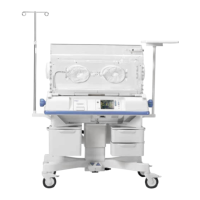
